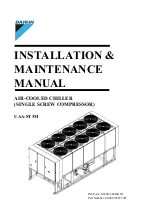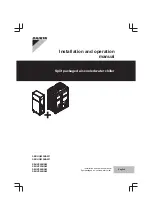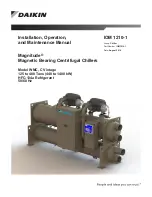
Clearing the Tines
The tines have a self-clearing action which eliminates most
tangling of debris in the tines. However, occasionally dry
grass, stringy stalks or tough vines may become tangled.
Follow these procedures to help avoid tangling and to
clean the tines, if necessary.
To reduce tangling, set the depth regulator deep enough
to get maximum “chopping” action as the tines chop the
material against the ground. Also, try to till under crop
residues or cover crops while they are green, moist and
tender.
While tilling, try swaying the handlebars from side to side
(about 6” to 12”). This “fishtailing” action often clears the
tines of debris.
If tangling occurs, lift the tines out of the soil and run the
tiller in reverse for a few feet. This reversing action should
unwind a good deal of debris.
WARNING!
Before clearing the tines by hand, stop
the engine, allow all moving parts to stop and
disconnect the spark plug wire. Remove the ignition
key on electric start models. Failure to follow this
warning could result in personal injury.
Tilling Tips & Techniques
Tilling Depth
WARNING!
Before tilling, contact your telephone
or utilities company and inquire if underground
equipment or lines are used on your property. Do
not till near buried electric cables, telephone lines,
pipes or hoses.
This is a CRT (counter-rotating tine) tiller. As the wheels
pull forward, the tines rotate backward. This creates an
“uppercut” tine action which digs deeply, uprooting soil
and weeds. Don’t overload the engine, but dig as deeply
as possible on each pass. On later passes, the wheels may
tend to spin in the soft dirt. Help them along by lifting up
slightly on the handlebar (one hand, palm up, works most
easily).
Avoid the temptation to push down on the handlebars in
an attempt to force the tiller to dig deeper. Doing so takes
the weight off the powered wheels, causing them to lose
traction. Without the wheels to hold the tiller back, the
tines will attempt to propel the tiller backward, towards
the operator.
•
•
•
•
•
•
When cultivating (breaking up surface soil around plants
to destroy weeds, see Fig. 4-9), adjust the tines to dig only
1” to 2” deep. Using shallow tilling depths helps prevent
injury to the plants whose roots often grow close to the
surface. If needed, lift up on the handlebars slightly to
prevent the tines from digging too deeply. (Cultivating on a
regular basis not only eliminates weeds, it also loosens and
aerates the soil for better moisture absorption and faster
plant growth.) Watering the garden area a few days prior
to tilling will make tilling easier, as will letting the newly
worked soil set for a day or two before making a final, deep
tilling pass.
Choosing Correct Wheel & Tine Speeds
With experience, you will find the tilling depth and tilling speed
combination that is best for your garden. Set the engine throttle
lever at a speed to give the engine adequate power and yet
allow it to operate at the slowest possible speed until you have
achieved the maximum tilling depth you desire. Faster engine
speeds may be desirable when making final passes through the
seedbed or when cultivating. Selection of the correct engine
speed, in relation to the tilling depth, will ensure a sufficient
power level to do the job without causing the engine to labor.
•
Figure 5-4
13
s
ectiOn
5 — O
peratiOn
Summary of Contents for 769-03618
Page 23: ...Notes 10 23 ...
Page 47: ...Notas 9 23 ...














































